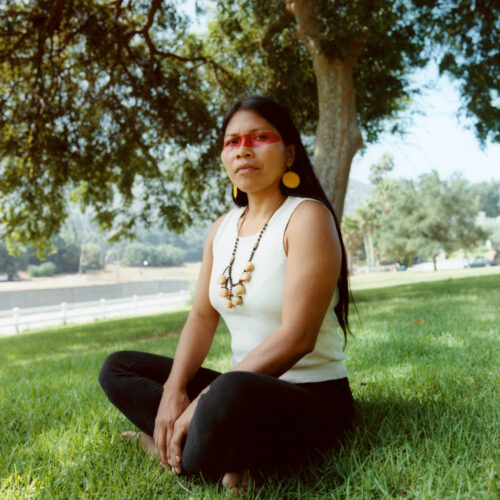“I wanted corn to be the main player in every dish,” said Matthew Diaz, the culinary director behind For All Things Good — the restaurant that he runs alongside chef Carlos Macias. Before ballooning into a restaurant with two locations, a neighborhood staple in Bed-Stuy and a newer cafe in Williamsburg, For All Things Good was initially a molinera, a store dedicated to high-quality masa tortillas. Diaz’s focus on the tortilla was the impetus behind opening his business. He noted that while tortillas are a fundamental component of Mexican cuisine, they are often overshadowed by overpowering star ingredients – think, as Diaz put it, “2-day braised beef.” Diaz views the tortilla as just as essential as protein and thus, by focusing on it, attempts to elevate it to its rightful culinary position.
Nixtamalization, the complex process which strenuously transforms corn into masa, separates For All Things Good from other Mexican restaurants that only use corn flour, mainly due to the time-consuming nature and high costs of creating masa the old-school way. In the case of For All Things Good, the electrical system of the entire building had to be rewired to support the energetic demands of a volcanic stone mill. But these steep costs are ultimately worth it — much like an Italian restaurant making fresh pasta, the difference in taste is apparent. The tortilla is not just a medium but an indispensable part of the dish, with delicate, nutty, and sweet notes.

Courtesy of Matt Diaz.
For All Things Good sources corn from Masienda and Tamoa, two brands that work with small family farms throughout Mexico, promoting the importance of heirloom corn varieties. As Diaz extolled, these companies protect those “who have spent generations protecting this biodiversity.” Especially considering the increasing homogenization of corn caused by industrial farming practices and the continued dependence on GMOs, these companies play a crucial, resistant role. Through selling varieties such as yellow tuxpeño or cacahuazintle, they nearly serve as the final bastion protecting the complexity of corn and the interests of small farmers.
These different corn species, as suggested by Diaz, have distinct flavor profiles. Diaz, who has a history in wine-making, sees parallels between masa and wine, particularly when it comes to their dependence on hyper-specificity. Whether it be the type of corn or the specific climatic conditions of certain areas, the rapture with which Diaz spoke about the intricate differences between kernels from Oaxaca versus Michoacan was stunning.
Working with multiple corn species comes with its own set of challenges. Diaz explained that depending on the type of corn, he alters the already “delicate process” of nixtamalization, “changing cook temperature, cook time, [and] the amount of cow that you use.” In the kitchen, there is a spirit of experimentation, this collaborative process of trial-and-error, where everyone works to revise recipes.
As a restaurant-goer, these efforts pay off. For All Things Good is not only the home of Brooklyn’s best tortillas, but its menu is full of wonderfully balanced and subtle dishes. The wonderful tinga and aguacate tacos are not about one note but about interplay, about how creaminess interacts with citrus. The menu is filled with playful dishes — mushrooms marinated in mezcal and telalas showing off the typically ancillary poblano pepper. By focusing on supporting and often overlooked ingredients, For All Things Good creatively breaks from tradition.
Discussing the creation of the menu, Diaz asserted, “It creates a fun challenge to create complete, complex dishes without adding a protein. It got to the point where adding a protein almost seemed like cheating. You’re like, ‘Ah, I can’t find a way to finish this dish. I guess I’ll put in the chorizo.’” Within this search for balance was a lighthearted but intense ambition.

Courtesy of Matt Diaz.
Yet, despite their apparent mastery of Mexican cuisine, Matt Diaz is unsatisfied. Diaz emphasizes learning and growing. Even though he has attended multiple corn symposiums, full of workshops on corn history and nixtamalization techniques, Diaz claims that there are many disputes that he is yet to resolve and many ways to improve his seminal masa. Between chefs, Diaz maintained that “there’s still a lot of conversation about what techniques do you use, why do you want to use them, where do you lean on tradition, where do you lean on the more scientific interpretation of things.” Ultimately, much of Diaz’s process is iterative, slowly figuring out how to improve his masa without being agnostic about the indigenous culinary and historical traditions.
As a result, Diaz’s stress on learning means that his culinary journey will soon move beyond the perfecting of masa with heirloom corn. His sights are set on understanding the innate, regional complexities of beans, chiles, and hibiscus. Diaz continues his path towards agricultural expertise — and we can’t wait to experience what comes next.









